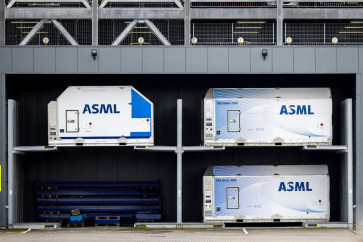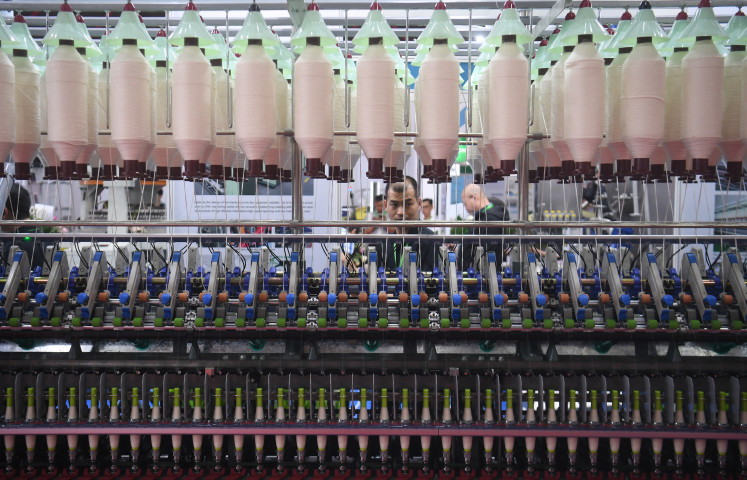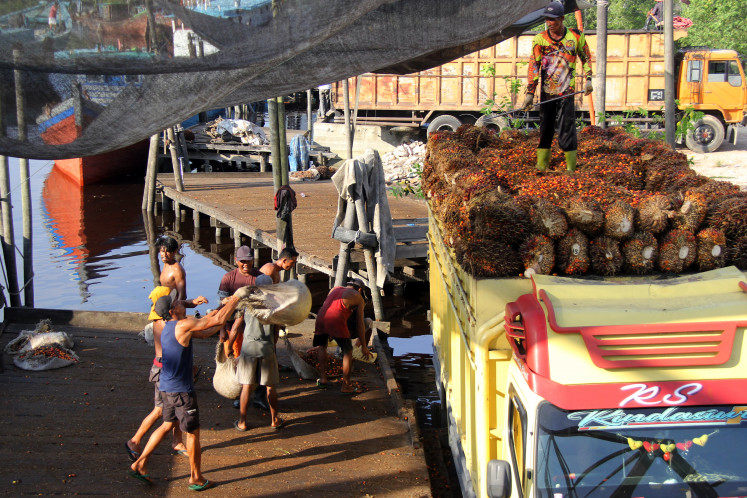Popular Reads
Top Results
Can't find what you're looking for?
View all search resultsPopular Reads
Top Results
Can't find what you're looking for?
View all search resultsFish, history of Carita beach
Visitors to Carita take a leisurely stroll along the beach’s soft, white sand
Change text size
Gift Premium Articles
to Anyone
Visitors to Carita take a leisurely stroll along the beach’s soft, white sand. (JP/Retno K. Djojo)
If you have an aversion to the smell of raw fish, you won't warm to the fish sellers on Carita beach in Banten, along Java's southern coast.
Scores of women walk along the tourist beach offering packets of salted fish for Rp 35,000 to visitors waiting for the mist that shrouds nearby Anak Krakatau volcano to clear up.
"This is 'jambal' fish," says one seller while holding up a packet containing three pieces of dried, saltwater fish.
"In Jakarta you would pay much more", she adds to her sales pitch.
Fish sellers buy the fish in bulk at the nearby Labuan fish market. After processing the fish they can earn a profit of around Rp 10,000 a day.
"Just enough to feed the family," says one seller, who adds she has been selling fish to tourists visiting Carita beach for more than 10 years.
Besides salted fish, sellers at the beach also offer tourists fruits picked from their gardens, such as sirsak (soursop). Some even sell melinjo berries (Gnom gnetum) that they collect from a nearby forest.
Quite a number of hotels and recreation centers line the beach along Banten's coast. The recreation centers that have access to the water line are quite busy during holidays, with visitors coming from as far away as Tangerang and Jakarta.
Tourists here can enjoy sunbathing and boating in the calm waters of Carita beach. Besides being a safe area for children to frolic in the water, visitors can enjoy a stroll along the stretch of white-sand beach that, unlike many other southern Java beaches, is still relatively free from plastic refuse.
Nearby Anak Krakatau, the child of Krakatau, is located at a critical juncture along the Asia and Pacific volcanic ring.
Krakatau erupted in a violent explosion in 1883, with historical records indicating it spewed out the contents of its belly over 19 consecutive days.
The explosion happened with such great force that its roar and rumbling could be heard from as far away as Sri Lanka and Japan. It threw up tons of hot rock into the air before its cone finally caved in.
The 1883 eruption resulted in the worst tsunami ever recorded in history. High waves crash ashore up to some 15 kilometers inland at some places, submerging villages along Banten and Lampung*s coastal areas.
Thousands of people died and a thick layer of volcanic ash blocked the sun for three consecutive days, which brought global temperatures down.
In 1928, Anak Krakatau began to emerge from the sea level where its mother had once stood. Carita beach faces Anak Krakatau in the Sunda Strait.
Currently at a height of some 200 meters, the "child", like its "mother", occasionally spews out smoke and cinders -- and its angry rumbles can be heard along Banten's coast.
Tourists and vulcanologists scaling this dangerous volcano say they can feel the heat under their feet -- an indication of the activity going on inside the "baby's" belly.
A boat trip in the Sunda Strait from Carita beach provides breathtaking panorama views of Anak Krakatau, weather permitted.










